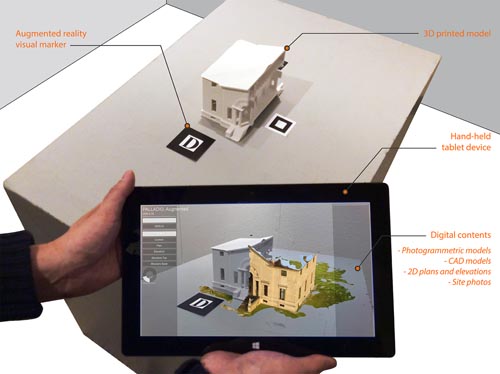RAMALYTIQUE (a.k.a. Multirama AR)
|
|
|
Augmenting Architecture through Multirama Proposed exhibition of Palladio's architecture projects Movie info: mp4, 480x270, 92 seconds Watch this video at YouTube |
|
|
Palladian Villas in Multirama AR MIT Faculty Exhibition (February-April, 2015 at WOLK Gallery) Movie info: mp4, 480x270, 135 seconds Watch this video at YouTube |
|
Project Overview
Certain artistic objects such as architecture are difficult to present in museums.
|
||
 |
System Composition The system uses marker-based augmented reality technology. A user looks at a partial 3D-printed model of a building through the camera of a hand-held device. |
 |
Display example Multiple models on a table can be exhibited simultaneously to work with a tablet. A flat panel monitor is placed to share the augmented view in the tablet with bystanders. |
 |
Interface on tablet The system allows a viewer to choose different media overlays including site context, plan and section drawings, digital 3D model and photogrammetric model. |
Further Development The system currently uses 3D printed scale models as reference. A museum of architecture may use a capital of column, a piece of furniture, and other fragments from any target building for augmentation with Ramalytique. Using drawings such as plans and sections is also possible. |
Support The development of this project has been supported by generous gifts and fundings from the following organizations and individuals. Autodesk
Special Thanks to
|